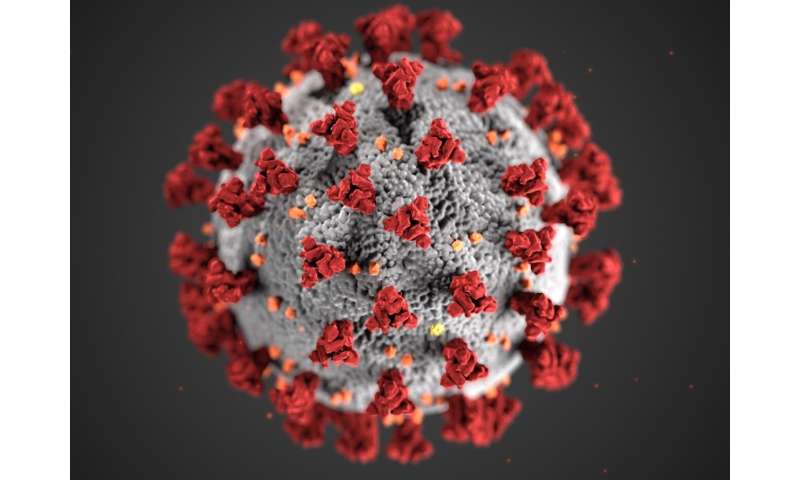
In a nationally representative analysis of coronavirus antibodies, researchers also found high rates of infection among Black and Hispanic people, and in densely populated areas.
About 9% of people nationwide have been infected with the coronavirus, according to a new study led by Stanford School of Medicine investigators.
“This is the largest study to date to confirm that we are nowhere near herd immunity,” said Julie Parsonnet, MD, professor of medicine and of epidemiology and population health, referring to the point at which a large part of the population becomes immune to a specific disease. Scientists estimate that 60%-70% of the population must have antibodies to the coronavirus before COVID-19, the disease the virus causes, fades, said Parsonnet, a co-author of the study.
The findings were based on antibody levels from a cross section of patients on dialysis in July. The study also found significantly higher rates of infection among Black and Hispanic people and among people living in densely populated areas.
“With this survey, we were able to provide a very rich picture of the first wave of the COVID-19 outbreak in the U.S. that can hopefully help inform strategies to curb the epidemic moving forward by targeting vulnerable populations,” said Shuchi Anand, MD, lead author of the study, which was published Sept. 25 in The Lancet. Glenn Chertow, MD, professor of medicine and chief of the division of nephrology, is the senior author.
Density a large contributing factor
The research was conducted by analyzing blood samples from more than 28,000 patients on dialysis across 46 states. The results indicate that population density may be the largest contributing factor to infection rates, Anand said.
Antibodies are produced by the body’s immune system in response to an infection and can be measured in the blood for months and even years after someone is no longer infected.
“Antibody testing is essential for monitoring the pandemic,” Parsonnet said. “The advantage over swab testing is that it gives you more of a historical view.” It’s still uncertain how long antibodies remain in the blood of individuals after they’ve had COVID-19, but estimates range from at least two months to much longer period of time, she said.
Serology testing, which measures antibody levels in the blood, is commonly used to test for the occurrence of widespread illness, Parsonnet said. Stanford researchers chose to conduct this testing on dialysis patients for multiple reasons, among them the ready availability of leftover blood plasma samples from the large population of these patients who get monthly laboratory blood tests.
“Not only is this patient population representative of the U.S. population, but they are one of the few groups of people who can be repeatedly tested,” Anand said. “This is a potential strategy for ongoing SARS-CoV-2 antibody testing and surveillance.”
Since end-stage kidney disease is a Medicare-qualifying condition, these patients don’t face many of the financial barriers to care that limit testing among the general population, Anand said.
“Unlike other studies that have aimed to determine the presence of antibodies to SARS-CoV-2, the virus that causes COVID-19, these estimates are unaffected by whether people feel well or unwell, worried or not worried, or have access to testing or not,” Chertow said. Testing 28,503 blood samples from patients on dialysis, the researchers found that 2,292 had antibodies to COVID-19, a prevalence of 8 percent in the sampling population, and 9.3 percent when standardized to the U.S. adult population.
“This study also showed a higher prevalence of undiagnosed cases consistent with other studies,” Anand said. Other serologic surveys of SARS-CoV-2 antibodies in the United States have been restricted to hotspots or underrepresented high-risk, vulnerable populations, and faced challenges to timely repetition and longitudinal follow-up, limiting their utility for surveillance, the study said.
Wide variation in prevalence
The Stanford study showed a wide variation in prevalence by neighborhood, ethnicity, income level and population density. Results showed disproportionally high antibody levels in Hispanic and Black populations (16.3%) compared with the white population (4.8%). And living in densely populated areas translated to a 10-fold higher risk of getting the disease than living in low-density areas.
The study also showed a remarkable variation by state, with early pandemic hotspots showing significantly higher rates than their neighboring states. The study determined that 33.6% of the population of New York had antibodies, whereas that figure was 17.5% in Illinois. In Pennsylvania, it was 6.4%, and in California, it was only 3.8%
There are limitations to relying on the dialysis population as a representative sampling for the nation, such as a higher proportion of those at increased risk of COVID-19 due to comorbidities. On the other hand, these patients are more often unemployed with less exposure to large groups. With repeated testing, these variations will become clearer, Anand said.
Source: Read Full Article
